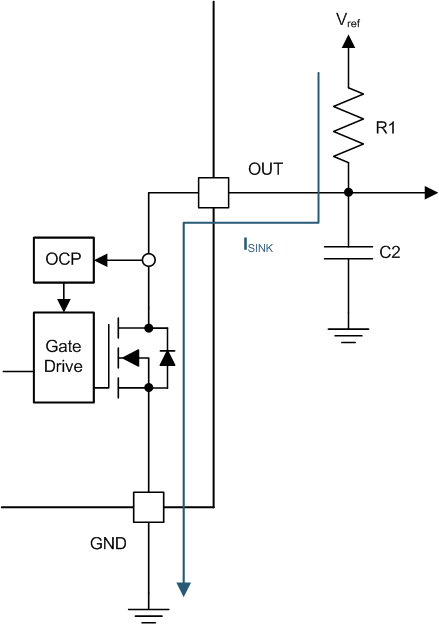JAJSNV0B December 2022 – August 2024 TMAG5115
PRODUCTION DATA
7.3.4 Output Stage
Figure 7-7 shows the TMAG5115 open-drain NMOS output structure, rated to sink up to 15 mA of current.
Note:
Vref is not restricted to VCC. The allowable voltage range of this pin is specified in the Recommended Operating Conditions.
 Figure 7-7 NMOS Open-Drain Output
Figure 7-7 NMOS Open-Drain OutputSelect a value for C2 based on the system bandwidth specifications as shown in Equation 1.
Equation 1. 

Most applications do not require this C2 filtering capacitor.